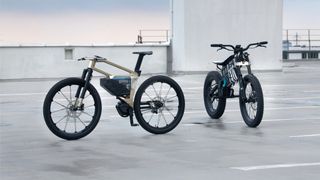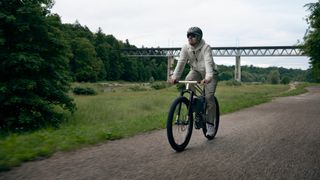
The best e-bikes of 2021 have a lot to offer, but how should they be developed in future? In truth, the industry has a bit of a dilemma on its hands.
Do you develop ever faster and more powerful machines, which essentially become e-motorbikes? Or stick to e-bikes that operate at slower speeds, which are more appropriate for cycle lanes?
The former are great for long distances, but could be dangerous and unpopular in urban environments. Just look at the furore over e-scooters, and imagine the problems that much faster e-bikes might cause for ordinary cyclists.
Ban powerful e-bikes from cycle lanes, though, and the opposite problem occurs, as e-riders are forced onto busy roads that put them in greater danger.
- Check out our complete guide to e-bike maintenance
- We've tested and ranked the best folding e-bikes
- Secure your e-bike with one of the best bike locks
Fear of regulation
If the industry itself doesn’t solve this problem, the fear is that government and city planners will step in, different areas will have different laws and regulations, and cyclists will get confused about what they can and cannot do.
And that means, of course, that marketing and selling the same e-bike across different territories would become a logistical nightmare. But now BMW has come up with quite a clever idea that could solve all this.

The BMW i Vision AMBY and BMW Motorrad Vision AMBY are two concept e-bikes that have a maximum speed depending on where you are, enforced by geofencing.
Get daily insight, inspiration and deals in your inbox
Get the hottest deals available in your inbox plus news, reviews, opinion, analysis and more from the TechRadar team.
That means they will power you up to 25km/h (15.5mph) on bike paths, up to 45km/h (28mph) on city roads, and 60km/h (37mph) on multi-lane highways outside the city.
While they're purely theoretical at this stage, the GPS tech they would require is already pretty much in place. BMW’s hybrid cars, for instance, automatically switch into all-electric driving mode when entering low emission zones.
Presented by BMW as part of the International Mobility Show in Munich, the i Vision AMBY is the lighter and sleeker of the two, at around 30kg, and dubbed the “first high-speed pedelec for urbanists”.

The BMW Motorrad Vision AMBY, meanwhile, weighs 65kg and is designed to be more of a “motorbike at heart”. With both e-bikes, you’d need to upload your licence and insurance details to an app to unlock the higher speeds.
Potential game-changer
We're excited by this. It seems like a smart solution for achieving maximum road safety for cyclists, while providing faster speeds that make it easier for out-of-towners to commute to work on two wheels.
That, in turn, would allow city planners to achieve their goals of encouraging more people out of their cars, cutting pollution, congestion and accidents in one fell stroke.
That said, the geofencing here would need to be pretty precise if it’s going to work in practice. It’s one thing to detect when a car is in a wide area like an emission zone, but pinpointing whether an e-bike is on a cycle lane or a highway next to it sounds a bit more challenging.
Still, if anyone can nail this, it's BMW. The innovation coming out of the German company is pretty intense, right now: check out their concepts for a new cargo e-bike and commuter-friendly e-scooter for instance. So here's hoping...
- Check out the best electric bikes
Tom May is a freelance writer and editor specialising in tech, design and sleep products. Over the years he's tested a number of mattresses, duvets and pillows, and as a back pain sufferer, has a keen interest in finding ones that offer maximum support. Plus, in running a successful Airbnb business, sleep hygiene and providing the right bedding for guests has become a big part of his day-to-day life. He is author of Great TED Talks: Creativity, published by Pavilion Books.

